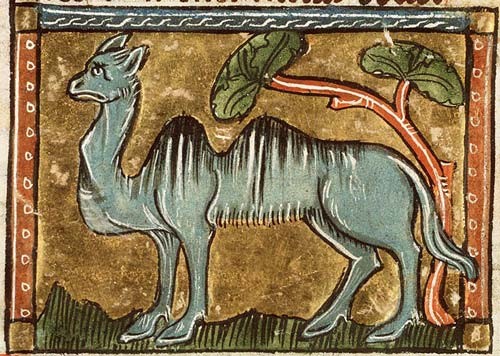After my last post on Medieval Animals, I was reminded about how great Hedgehogs are, and was prompted to do a brief history of hedgehogs. Sounds niche, and it is. Here I am just going to go into hedgehogs from a British/Western perspective, although I am aware that they feature in some countries’ mythologies.)
Hedgehogs are great! I love hedgehogs. Look at this little hoglet!
N’awwwwwwh!
So it turns out people have always been interested in Hedgehogs. But not because of their unbearable cuteness. No. Because it’s strange for a little rodent mammals to be covered with spikes, which must be useful for something… right…?
“To prepare for winter, hedgehogs roll on fallen apples to stick them to their spines, then taking one or more in their mouths, carry the load to hollow trees.” Pliny the Elder, Natural History, 8, 56.
You know it is true, because Pliny the Elder said it, and Piny is never wrong. Except for when he decided not to run away from Mount Vesuvius back in 79 CE… (CE? AD? TMI? Why am I using BCE?)
Pliny said that in the 1st Century CE, but clearly it was an enduring idea because in the 9th Century, Isadore of Seville said:
“The hedgehog is covered with quills, which it stiffens when threatened, and rolling itself into a ball is thus protected on all sides. After it cuts a bunch of grapes off a vine it rolls over them so it can carry the grapes to its young on its quills.” Isadore of Seville, Etymologies, Book 12, 3:7
So, the belief in the collecting of fruit consists. And because sources like Pliny were read and believed basically for the whole of history, regardless of the fact that clearly no-one ever saw a hedgehog wearing a coat of tasty apples, the belief persisted! As demonstrated in these fab pictures.




(It seems like the idea of a hedgehog being an ideal vehicle for grapes (or cubes of pineapple and cheese) continues to this day! I had no idea my childhood birthday party treats had such historic inspiration.)
Alternatively, the whole fruit stealing is an allegory for the devil stealing man’s “spiritual fruit”. Anyway. Moving on.
As we move into the late medieval/early Tudor period, people started using the word Hedge-Hog or Hedge-Pig. Before the word hedgehog, they would mostly have been known as Urchins! And the word urchin continues to be used for several centuries to come. And because of the lovely old fashioned idea that for almost everything there was on land, there was an equivalent in the sea, the spiky round creatures which lived in the sea were called: Sea-Urchins.

As well as (/in stead of) the idea that hedgehogs could steal fruit, the idea that the hedgehog steals milk from cows, by drinking their milk at night and possibly drying out their udders, and steals eggs from hens, became widely believed. So fair enough, hedgehogs do eat eggs, but it’s unlikely they can milk cows.
The secondary sources I have found blame this idea for the high bounty on the hedgehog’s head in the Tudor Vermin Act.
In the 1532, the first Preservation of Grain Act, or “Vermin Act” was passed, mostly focussing on crows. The Vermin Act was essentially an act which encouraged the population to kill “vermin” for a price per head. In 1566 it was extended to cover the slaughter of a huge range of animals, for large sums of money, including the hedgehog.
This makes sense to a point, as this was a time when many many people were struggling to have enough to eat. Due to poor weather and poor harvests, many working-class people were on the bread line, and any animal who may have stolen food and increased food scarcity, was everybody’s enemy.
If you killed a hedgehog, according to the Vermin Act, depending on your parish, you could claim up to 4 pence! A huge sum for such an unassuming animal. And the slaughter of Britain’s wildlife under this and subsequent acts continued for until the 1820-30s in some places.
Lovegrove has estimated that that around half a million hedgehogs were killed for bounty in the 140 years between 1660 and 1800. It is surprising that they were not completely eliminated from some areas.
Some people apparently continued to believe that hedgehogs stole milk from cows, until the 20th century, although there are several sources ridiculing the idea. This was written in the 1800s:
They say they milk the cows and when they lye
Nibble their fleshy teats and make them dry
But they who’ve seen the small head like a hog
Rolled up to meet the savage of a dog
With mouth scarce big enough to hold a straw
Will ne’er believe what no none ever saw
From The Hedgehog, John Clare.
After centuries of improved scientific understanding, improving education, more accurate factual recording, and finally, Google, the general public now has a much better understanding of the behaviour of really any animal. It is ridiculous to us to discover what misconceptions our ancestors had, because we are so comparatively brilliantly informed. The difference is comical because it is incredible.
It is strange to think how differently hedgehogs (or, as I like to think of them, “land-urchins”) were regarded in history, and what a PR overhaul they have had since the Victorian period. Now a beloved little creature, children’s character, cartoon and even pet, they used to be firmly in the category of “vermin”, and people, including children, were encouraged and happy to kill on sight for money, due to their evil tendencies.

What are my sources?














